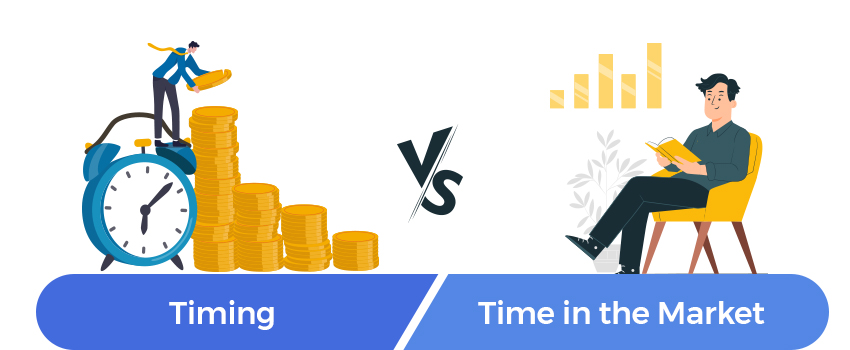It’s a debate as old as investing itself: is it better to try and time the market—buying low and selling high—or to simply stay invested and let compounding do the heavy lifting? At first glance, market timing might seem like a smart way to avoid losses and maximize gains. But the evidence, history, and behavioral pitfalls all suggest otherwise. For most investors—especially beginners—long-term commitment and discipline often outperform short-term maneuvering.
Let’s take a closer look at why “time in the market” almost always wins over “timing the market,” and how understanding the difference can reshape your entire investing mindset.
The Illusion of Perfect Timing
It’s easy to imagine the ideal scenario: you invest at the bottom, ride the wave to the top, and cash out just before a downturn. In reality, though, even professional fund managers and economists struggle to consistently predict market movements. Numerous studies show that missing just a handful of the best days in the market can significantly hurt long-term returns.
For instance, if you had invested € 10,000 in the S&P 500 at the start of 2003 and stayed fully invested through 2023, your investment would have grown to around € 64,000. But if you missed just the 10 best-performing days in that 20-year span, your return would drop to less than € 29,000—more than 50% lower. Miss 20 of the best days, and the return drops even further, below € 19,000. And ironically, many of those best days occur shortly after the worst ones—when fear tends to push people out of the market.
This isn’t just about numbers. It’s about psychology. Humans are wired to react emotionally to fear and greed. When markets drop sharply, the impulse to sell and “wait for it to settle” feels rational. But more often than not, those who step aside during downturns end up missing the recovery altogether.
What “Time in the Market” Looks Like
Instead of trying to jump in and out based on predictions, staying invested over time allows your capital to benefit from the natural upward trend of markets. Despite countless crises—the dot-com bubble, 9/11, the 2008 financial crisis, COVID-19, and more—broad equity markets have historically moved higher over long periods.
The S&P 500, for example, has delivered an average annual return of about 10% since its inception in 1926. That figure includes recessions, wars, political upheaval, and financial crashes. The reason it’s still positive? Compounding. Dividends reinvested over time, along with earnings growth, create exponential returns that reward those who stay the course.
This doesn’t mean you should ignore risk. Volatility is part of investing, and downturns can be painful. But long-term investors who diversify, rebalance periodically, and resist the temptation to react emotionally to short-term noise tend to fare far better than those trying to dance around market movements.
Why This Matters Right Now
As of mid-2025, markets are once again volatile. Inflation is easing but remains above central bank targets. Interest rate cuts, once expected early in the year, have been delayed. Geopolitical tensions—from trade disputes to regional conflicts—continue to create headwinds. Over the past month alone, major indices like the S&P 500 and Euro Stoxx 50 have fallen by 4–6%, prompting headlines filled with fear and speculation.
But none of this is unusual. Volatility is a feature of the market, not a bug. Trying to time when to jump in or out based on these fluctuations often leads to missed opportunities. For long-term investors, the smarter strategy is to zoom out, focus on asset allocation, and remain disciplined—even when the news cycle feels overwhelming.
Building Wealth Requires Patience, Not Predictions
The takeaway is simple but powerful: building wealth through investing isn’t about predicting the next market move—it’s about participating in the market consistently over time. Time in the market allows you to benefit from growth, dividends, and compounding. Timing the market exposes you to the risk of being wrong—at the worst possible moments.
So whether you’re just getting started with €1 or managing a growing portfolio, remember this: you don’t need perfect timing to succeed. What you need is a plan, patience, and the confidence to stay the course when others are panicking. That’s how real wealth is built—slowly, steadily, and over time.

